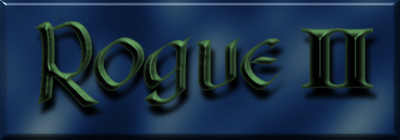About the Robot Design Department
Robots
Current
Robot:
DavidII 2000
Previous Robots:
RogueII '99
Rogue '98
David '97
The
Team
Current
Team:
1999
- 2000
Previous
Team:
1998 - 1999
1997 - 1998
1996 - 1997
Sponsors
Current
Sponsors:
1999
- 2000
Previous
Sponsors:
1998
- 1999
1997 - 1998
 "The goal of Computer Science is
to build something that will last at least until
"The goal of Computer Science is
to build something that will last at least until
we've finished building
it."
- Unknown
Design Objectives
| General Description | Mechanical
Description
Electrical Description
|
This year's robot will be a second generation design with the same overall idea and functionality of Rogue with some additions to the original design.
As last year, this robot will be built with the intention of winning. In redesigning Rogue out team will improve upon the original design while avoiding past mistakes. Another goal of the current team is to document every aspect of the robot for future reference and possibility of getting published by a number of magazines, newspapers, etc..
After last year's competition the team had gained an idea of Rogue's flaws and were determined to correct them. So the concept of Rogue has remained the same with design changes mainly focusing on weight, sensors, and gears.
RogueII, as mentioned above, is roughly based on the physical structure of a crab. It has a total of six legs, each with two joints capable of individual movement. Each joint will be capable of approximately 400 degrees of rotation, allowing for several different modes of walking. The legs are attached to the body in two groups of three, the sets are attached to the upper and lower sections of the body, respectively. A joint located between the upper and lower sections of the body allows rotation of one set of legs with respect to the other. Turning is accomplished through rotating the raised triplet of legs with respect to set that are in contact with the ground.
The electronic systems within Rogue will be kept as modular and flexible as possible. The high-level control, such as path planning and motor coordination, will be implemented on a PC-104 bus single-board computer. Low-level control, such as individual motor control, will be handled by simpler microcontrollers. It will be possible to change the implementation at one level of control without affecting that of the other levels. A specific software architecture will be developed that abstracts each control level. The architecture will consist of a simple command set for inter-level communication. An I2C serial bus will be utilized for communications purposes. This bus offers a great deal of flexibility and expandability. The addition of new devices on the bus is simple and fast. Rogue will have contact and color sensors on each of the feet. Additional sensors may be added as time and finances permit. This may include CCD cameras, sonar range finders and/or proximity sensors. The design is flexible enough to allow the addition of these devices in the future with minor, if any, impact to the implementation of other systems. |
